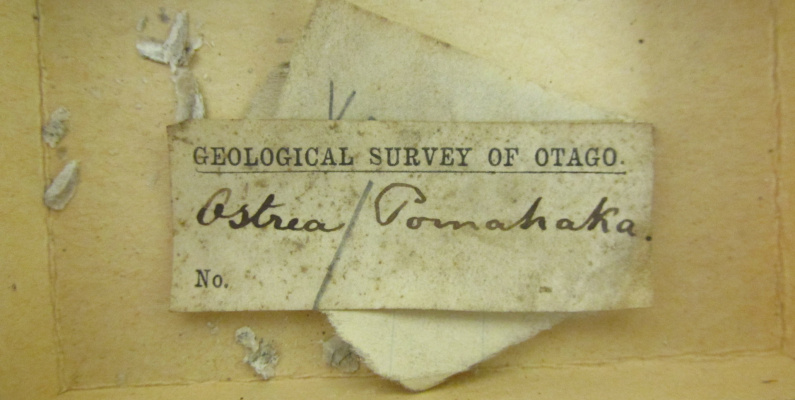
Q & A with Henry Gard
The Otago Museum is a busy place, with over 350,000 people through our doors in the last year. A number of these visitors are researchers who have requested access to our world-class collection of 1.5 million+ objects to support their studies.
These researchers are doing really interesting things, and are often accessing items in our collections that aren't on public display, so we want to share some of their visits to provide another insight into what a behind-the-scenes day at the Museum looks like.
Meet our first researcher, Henry Gard, a University of Otago postgraduate student. Make sure you keep an eye out for further Q & A sessions here on the blog over the next few months too... Enjoy!
Place of study
I’m a postgraduate student in Dunedin at the University of Otago, Department of Geology, originally from Duntroon in the Waitaki Valley, currently finishing my research paper on the molluscan paleoecology of the shallow marine Chatton Formation (a shelly sandstone unit about 25 million years old), southern New Zealand.
Tell us about your visit
I’ve been looking at the bulk collections of marine invertebrates from the Otago and Southland regions. As the fossil specimens were awaiting cataloguing it was a bit of a treasure hunt and I didn't know what I was going to uncover!
These bulk collections were of particular interest for my research on Chatton Formation fossil molluscs, as many pre-date the formation of the Otago Museum and are old New Zealand Geological Survey (NZGS) collections. In the late 1800s and early 1900s the NZGS was responsible for many fossil collections from the Chatton Formation. But alas, there were no specimens in the bulk collections relevant to current research; however there were many weird and wonderful fossils besides molluscs, including shark teeth, a small crab and a block of sandstone chockablock with large barnacles!
I looked at the fantastic holotypes of the bivalves Megacardita ponderosa and Athlopecten marshalli described by Henry Suter and collected by Patrick Marshall from Chatton Formation at Waikaia in the early 1900s. I also saw the fossil estuarine molluscs from the Pomahaka area – one of which turned out to be one of the first fossil molluscs collected from there by the famous NZ geologist James Hector in the 1860s which is very exciting! His rather distinctive handwriting was on the oldest label .

Why visit Otago Museum?
Any fossils collected from the Otago region may end up here so it was highly likely that a collection from the Chatton Formation from Otago or even Southland may have been in the Museum collection. I was in search of a particular collection made by another famous NZ geologist, Alexander MacKay, in the 1890s. This was supposedly one of the few collections of Chatton Formation molluscs from Waikaia. Sadly, this collection was not found, but there was a large block with fossils from Waikaia in the Museum’s catalogued collection which adds to the paleoecological interpretations we can make about the area.
What do you hope to achieve from your research visit here?
I am hoping to add the information I have gathered to a research paper I am working on entitled Molluscan paleoecology of the shallow marine Chatton Formation, southern New Zealand. The aim of this paper is to list all known fossil species and what their ecology might have been, and to discuss the fossil assemblages at different sites throughout Otago and Southland.
Why do you love science, or in your case, geology?
What I love about geology is that it is a very hands-on science and there are plenty of opportunities to explore the outdoors. As a paleontology student I enjoy discovering what our oceans were like in the past and how they have evolved over millions of years. I also enjoy the forensic side to paleontology, i.e. discovering how organisms died and what they can tell us about the environmental conditions at the time.
